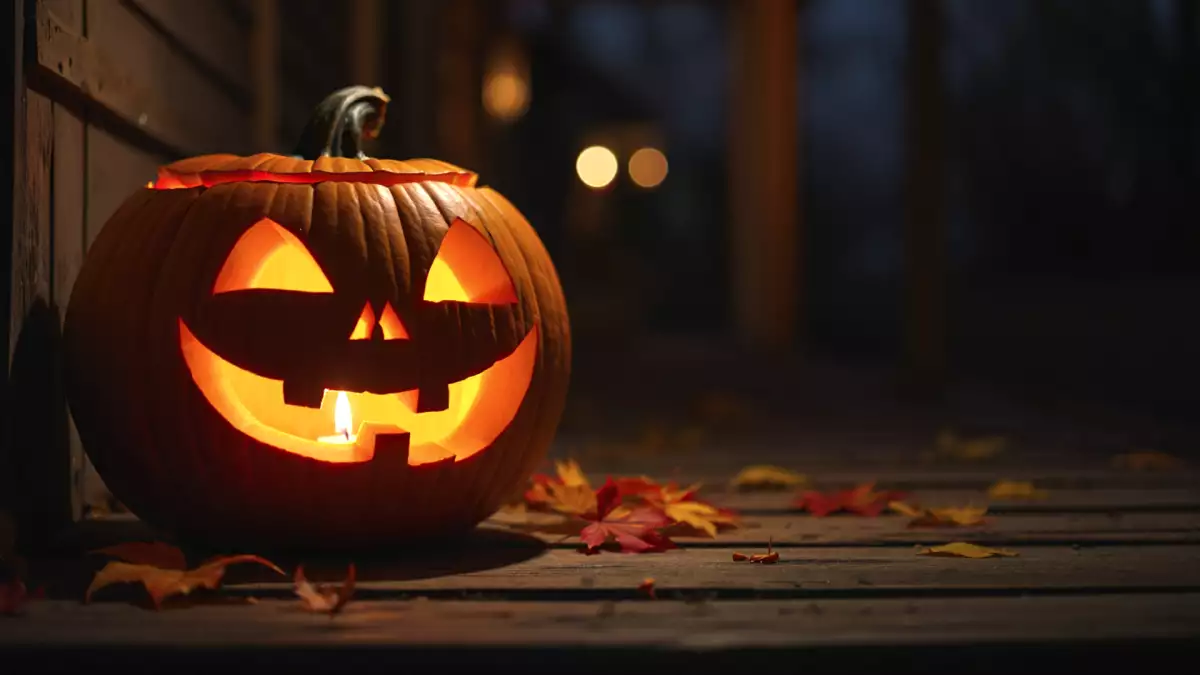Pumpkins weren’t always part of Halloween: the strange legend that turned them into icons

Halloween is, above all, a night of rituals. Not only in the United States: every October 31, a good part of Europe relives the same pulse between humor, fear and memory. The streets are filled with families and friends in costumes, children walk through doorways with their bags of candy, houses are illuminated with candles and trembling lights. And, at the center of all that imagery, a carved pumpkin glows.
Among all the traditions, the costumes, the ghost stories, the homes turned into scenes of the supernatural, there is one image that sums up the essence of the holiday: the pumpkin. It is on the porches of American neighborhoods and in European kitchens, in store windows and in the photographs that flood the networks, where a chubby baby poses inside a hollow pumpkin. No other object, neither ghosts, nor vampires, nor candles, nor skulls, defines as clearly as it does the border between the playful and the disturbing of Halloween night, especially when it bears a carved grotesque face and a light flickering inside.
If Christmas has its tree and Easter its egg and bunny, Halloween has its pumpkin. But how did a humble fruit of the garden end up becoming a universal emblem of the darkest night of the year?
From fields to legends
The origin of the Halloween pumpkin goes back to the rites of Samhain, the ancient Celtic festival marking the end of the agricultural summer. On that night, it was believed that the boundary between the world of the living and the world of the dead became thinner, and the peoples of northern Europe lit bonfires and carved turnips to make protective lanterns.
Over time, that custom blended with Christian celebrations of All Saints' Day, and what was once an agricultural rite took on the overtones of mystery and night.
To this practice was added a popular Irish legend: that of Jack-o'-Lantern, a farmer condemned to wander with an eternal ember inside a hollow turnip. His story gave its name to Jack-o'-lanterns and, later, to the most recognizable symbol of Halloween. According to various studies of European folklore and Irish chronicles of the 18th century, it was this mixture of rite and myth that gave rise to the modern tradition.
The leap to America and the metamorphosis of the flashlight
When Irish emigrants crossed the Atlantic in the 19th century, they brought with them the story of Jack and the custom of carving turnips. In America, however, they discovered something new: pumpkins, which were larger, more plentiful and easier to hollow out.
That practical substitution transformed the tradition forever. Jack's jack-o-lantern took the shape of a pumpkin and became the visible face of Halloween night. What was born as a peasant gesture eventually became a global icon of light and shadow, repeated every autumn in millions of homes around the world.
Why are we visually fascinated by the carved pumpkin?
The appeal of the carved pumpkin goes beyond its shape. It seduces us because it condenses a universal idea: the tension between shadow and light. Inside a gourd lantern, a candle or a small light bulb creates a hypnotic play of reflections and shadows, as if the night let itself be tamed for an instant.
This mixture of darkness and brightness explains much of its magnetism. The pumpkin not only decorates: it acquires a new meaning. It turns the everyday into symbolic and goes from being a simple fruit of the field to a ritual object.
Every October, when that trembling light peeks out from behind a smile carved into a pumpkin, the scene is repeated with the same fascination: an ancient gesture that we continue to interpret, perhaps unknowingly, as a way of overcoming, even if only for a few hours, the darkness.
Thus, a carved pumpkin with a light inside became the best metaphor for Halloween: illuminating the darkness with creativity.
 Patricia González
Patricia González
Comments